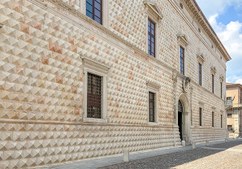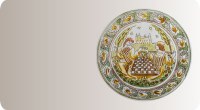Ferrara at the time of Ludovico Ariosto
We discover Ferrara walking in the footsteps of Ludovico Ariosto, thanks to an itinerary that narrates the city’s most hidden treasures.
It touches on those sites so rich in history, but less well known than others, frequented by the poet during his long stay in the city. The palaces where he studied, surrounded by academics and humanists; the intimate and familiar places and the official ones where Ariosto worked when he was at the service of the Estense family in 16th-century Ferrara and, in later years, the places he frequented when he became a court playwright fulfilling his dream, right through to those where he chose to spend the last years of his life, busy writing Orlando Furioso, the epic poem that made him famous.
We begin at Palazzo Schifanoia with the seasons and signs of the zodiac of Salone dei Mesi that so enchanted the poet, and then continue the Monastero del Corpus Domini, the monastery that houses the tomb of Lucrezia Borgia. We continue along the streets where Ariosto lived – 29 Via Giuoco del Pallone and 15 Via del Carbone – visiting Palazzo Paradiso along the way. Now home to the Biblioteca Ariostea, it houses the funeral monument to Ariosto. We reach the imposing Cathedral of Ferrara to see characteristic Via Adelardi that runs alongside it. Here, to this day, stands “Al Brindisi” inn – known at the time as “Hostaria del Chiuchiolino” – frequented since 1435 by historical figures, including Ariosto himself. The imposing Volto del Cavallo portal leads to Piazza Municipale from where we continue as far as Este Castle. From here, we take Corso Ercole I d’Este where we can see the ashlars of beautiful Palazzo dei Diamanti. The itinerary ends with two sites that recall Ariosto, elliptical-shaped Piazza Ariostea, that has a statue dedicated to the poet at its centre, and Casa Ariosto, the house he owned and where he wrote the last version of Orlando Furioso.
You can learn more about Ariosto’s story by downloading the 10-episode podcast, on loquis or using the QR code on the map.













